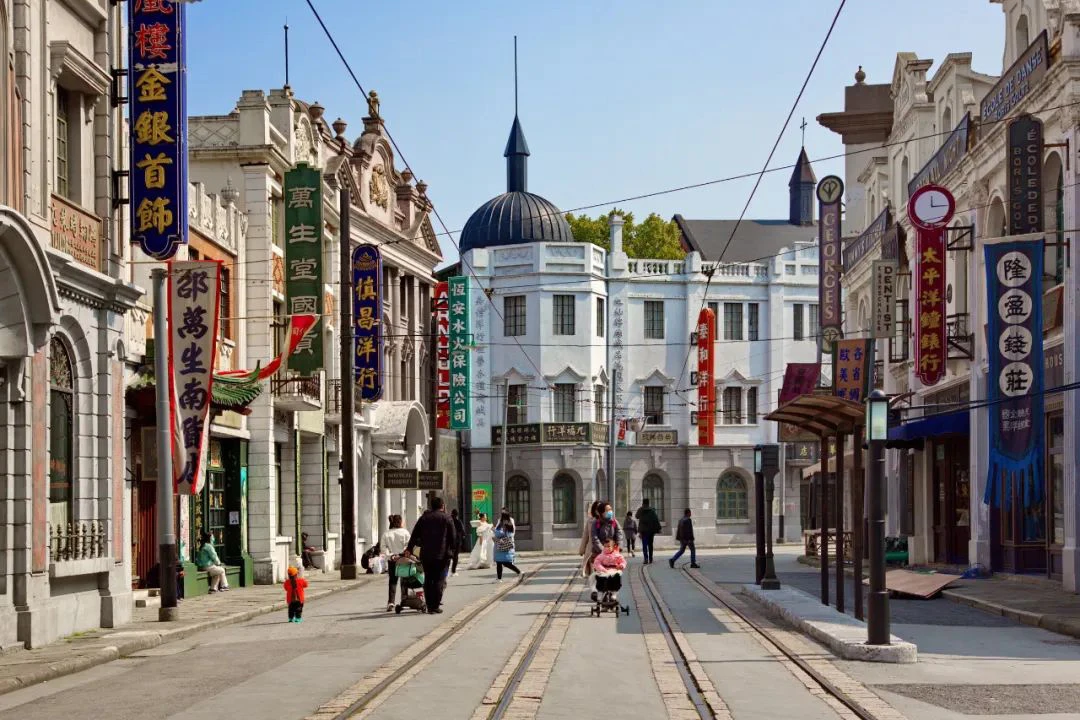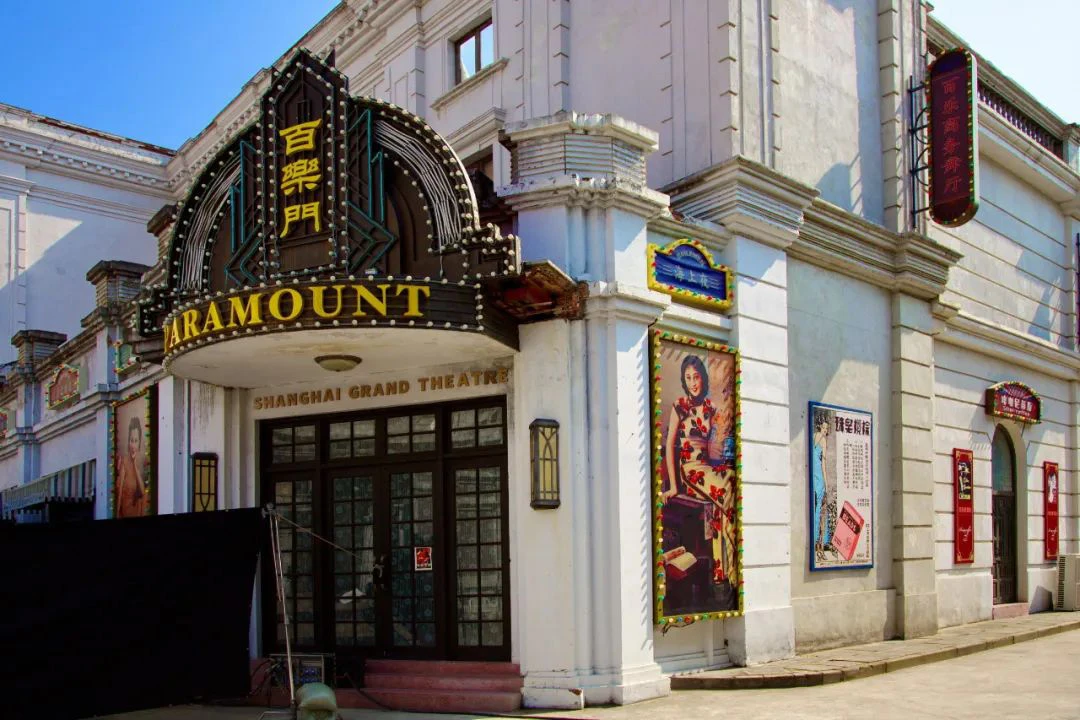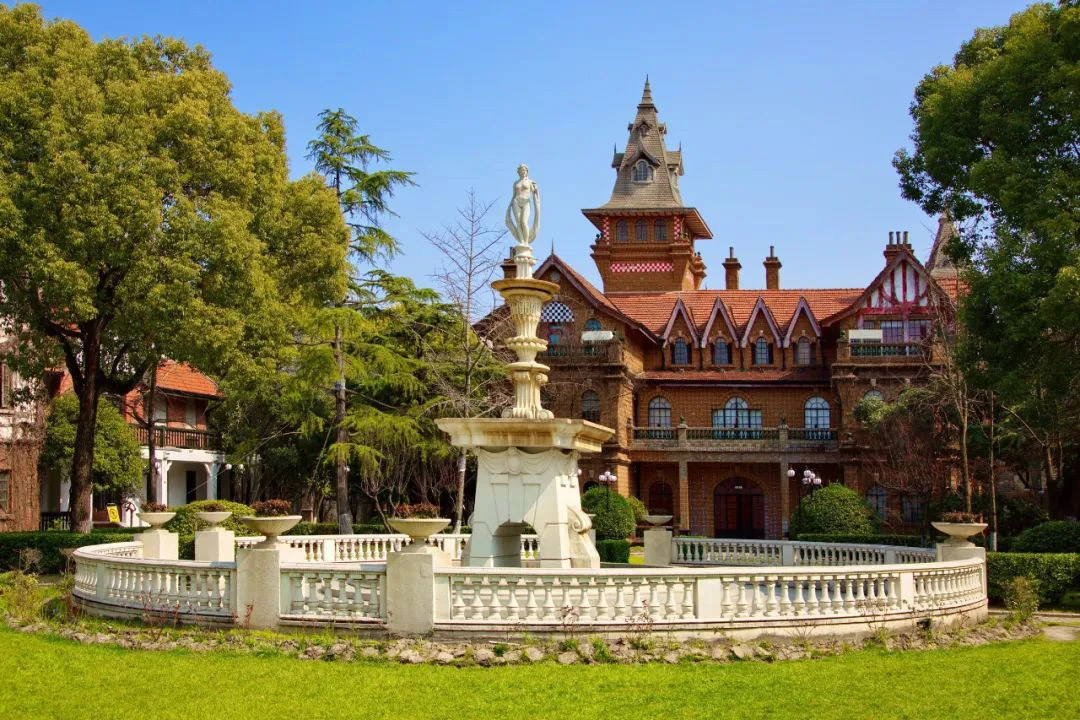Shanghai Movie Park, also known as Chedun Film and Television Base, is a film and television production site located in Chedun Town, Songjiang District, Shanghai. It has become a repository of old Shanghai’s historical charm, meticulously replicating the city’s iconic architecture and streetscapes from the 1930s. As you step into the park, it feels like you’ve been transported back in time, immersed in the hustle and bustle of the Bund and the glamour of the former concession areas.
Despite the rapid development of modern Shanghai, the old city has all but vanished, making Shanghai Movie Park one of the few places where you can still experience the nostalgia of bygone era. Through painstaking recreations of famous historical buildings and European-style courtyards, the park captures the essence of old Shanghai’s vibrant street life and cultural heritage.
Although relatively small in size, the park has faithfully recreated the streetscapes of Shanghai during the Republican era, evoking a sense of familiarity for those who have seen them in movies and TV shows. As you stroll through the park, you can’t help but feel like you’ve been transported back to the 1930s, with the scent of old Shanghai wafting through the air.
Vintage trams rumble along the streets, while pedicabs whiz past, their bells ringing. Banners advertising massive discounts hang from the storefronts, and the walls are plastered with all manner of advertisements, just as they would have been in those bygone days.
One of the park’s most impressive features is the full-scale recreation of Nanjing Road from the 1930s, along with the old city quarters of Shanghai. These meticulously crafted sets provide the perfect backdrop for filmmakers, allowing them to capture the historical ambiance and cultural landscape of Shanghai through the unique lens of cinematic art.
More than just a film set, Shanghai Movie Park offers visitors a chance to relive the charm of old Shanghai and gain a deeper understanding of the city’s rich history and cultural evolution. As you wander through the park, you can almost hear the echoes of the past – the clinking of coffee cups, the crackle of an old gramophone, the melancholic strains of a shidaiqu (a popular song genre from that era) drifting through the air.
The recreation of 1930s Nanjing Road is undoubtedly the centerpiece of Shanghai Movie Park. This iconic street, stretching from the Bund in the east to the tranquil Jing’an Temple in the west, has witnessed the ebb and flow of Shanghai’s fortunes over the centuries. Lining the street are the imposing facades of the Xianshi, Yong’an, Xinxin department stores, their rivalry a testament to the city’s mercantile spirit. Interspersed among these giants are century-old shops, specialty boutiques, and storefronts that once catered to every conceivable taste and desire.
As you wander along Nanjing Road, the sights and sounds evoke a palpable sense of Shanghai’s unique “haipai” culture – a blend of East and West that defined the city’s cosmopolitan character. It’s as if the very essence of old Shanghai has been distilled into a cup of fragrant coffee, the scratchy melodies of a gramophone record, or the plaintive notes of a Baleluan ballad.
Leaving behind the bustling Nanjing Road, you’ll find yourself in a tranquil European-style courtyard, surrounded by elegant villas and mansions that once housed Shanghai’s wealthy elite. Among these, the Muller Mansion stands out as a true architectural gem. In 1919, a British businessman named Muller, having struck it rich through horse racing, commissioned the construction of this whimsical residence based on a design his daughter had dreamed up. Today, this fantastical villa has been faithfully recreated within the park’s grounds.
Throughout Shanghai Movie Park, you’ll also encounter replicas of the city’s famous “shikumen” residences – a unique architectural style that emerged in the late 19th century within the former foreign concessions. These terraced houses combined elements of European row housing with the traditional Chinese courtyard layout, creating a distinctive fusion of East and West.
Zhejiang Road Bridge is a simply supported fish-belly steel truss bridge spanning the Suzhou River in downtown Shanghai. Because it was built next to a garbage loading dock during construction, the bridge became known colloquially as the “Garbage Bridge” by locals. Zhejiang Road Bridge serves as a river crossing connecting the Huangpu and Jing’an districts. The original bridge was a wooden pedestrian bridge constructed by the Shanghai Public Works Department in 1880, which was later rebuilt in 1906 into the existing fish-belly simply supported steel truss structure.
Crossing over Zhejiang Road Bridge, one enters the old Shanghai street area of the Shanghai Movie Park. Strolling along the winding alleys, it feels like being transported back to an ancient Jiangnan town during the Republican era. The street is lined with densely packed brick and wood residential buildings featuring grey-tiled roofs, intricate brick carvings and wooden lattices on the windows and door lintels, showcasing exquisite craftsmanship. The entire street meanders and stretches out, its depth unfathomable, with an intricate maze of narrow alleys branching out in all directions.
Since its inception, Shanghai Movie Park has become the go-to location for filmmakers seeking to capture the essence of old Shanghai. Some of the most renowned productions shot here include “The Disguiser,” as well as critically acclaimed films like “Lust, Caution,” “Kongfu.”
By preserving and recreating the architectural and cultural heritage of old Shanghai, this remarkable film park has become a living museum, allowing visitors to step back in time and experience the city’s rich, multifaceted history through the magic of cinema. It serves as a portal to the past, transporting guests to a bygone era when Shanghai was a melting pot of Eastern and Western influences. Through meticulous attention to detail, the park captures the essence of old Shanghai’s unique blend of art deco grandeur and traditional Chinese aesthetics.
Visitors can immerse themselves in the sights, sounds, and ambiance that once defined this cosmopolitan city, gaining a deeper appreciation for its cultural legacy and the stories that unfolded within its storied streets and alleyways. This living museum not only entertains but also educates, ensuring that the spirit of old Shanghai lives on for generations to come.



